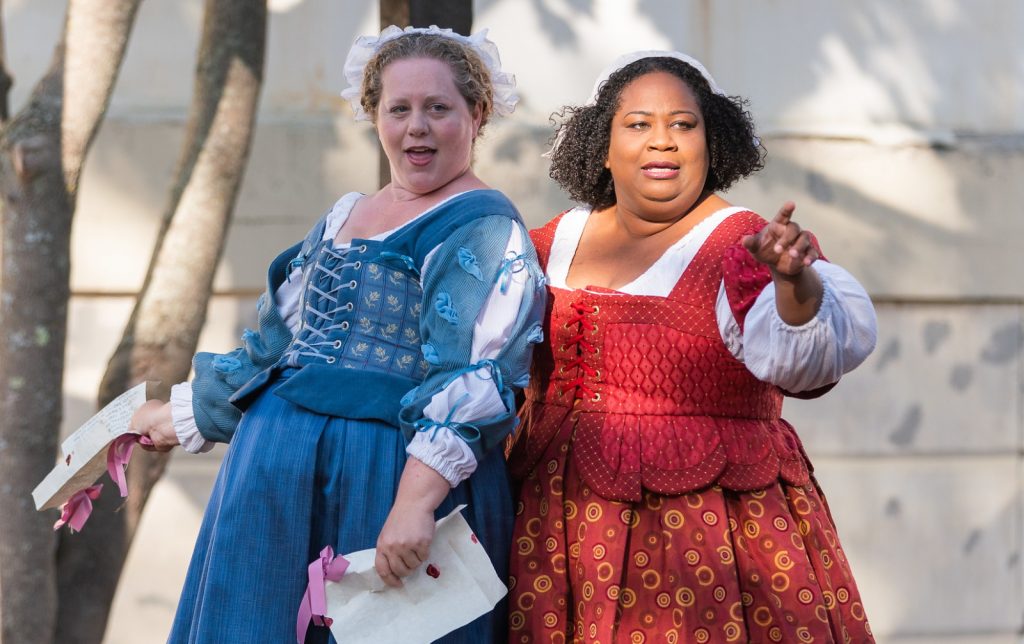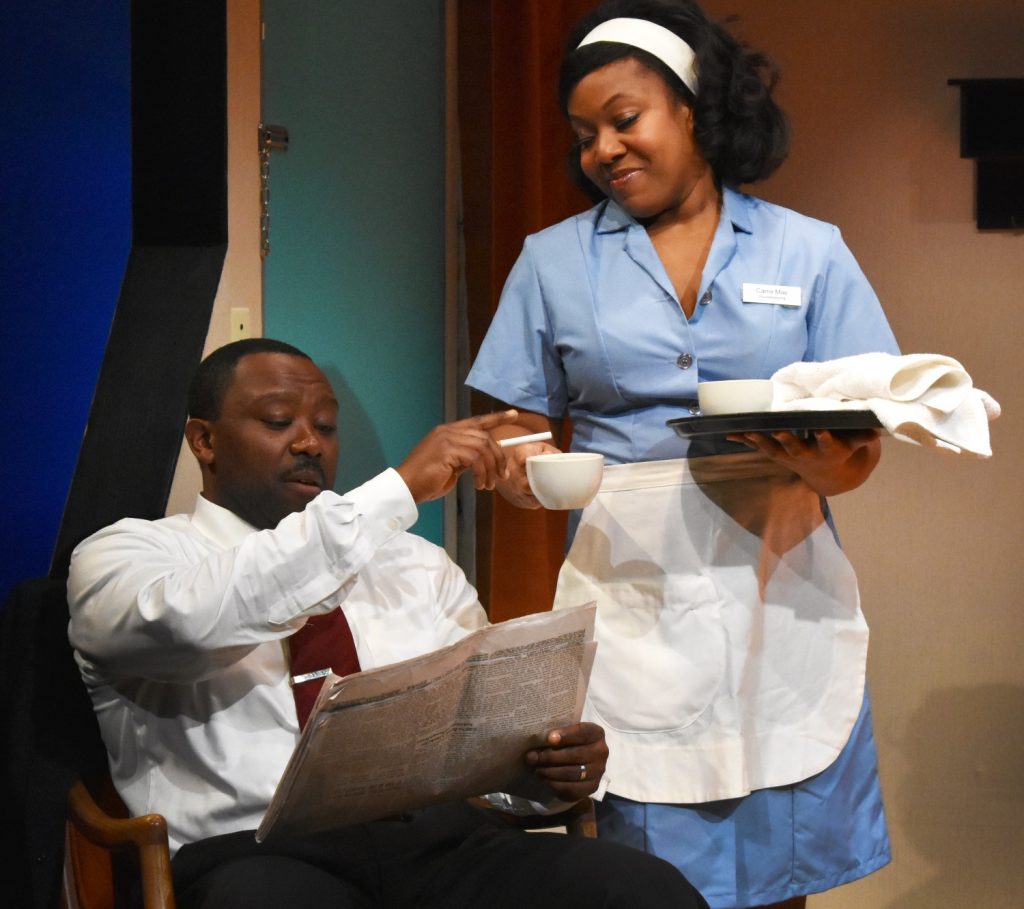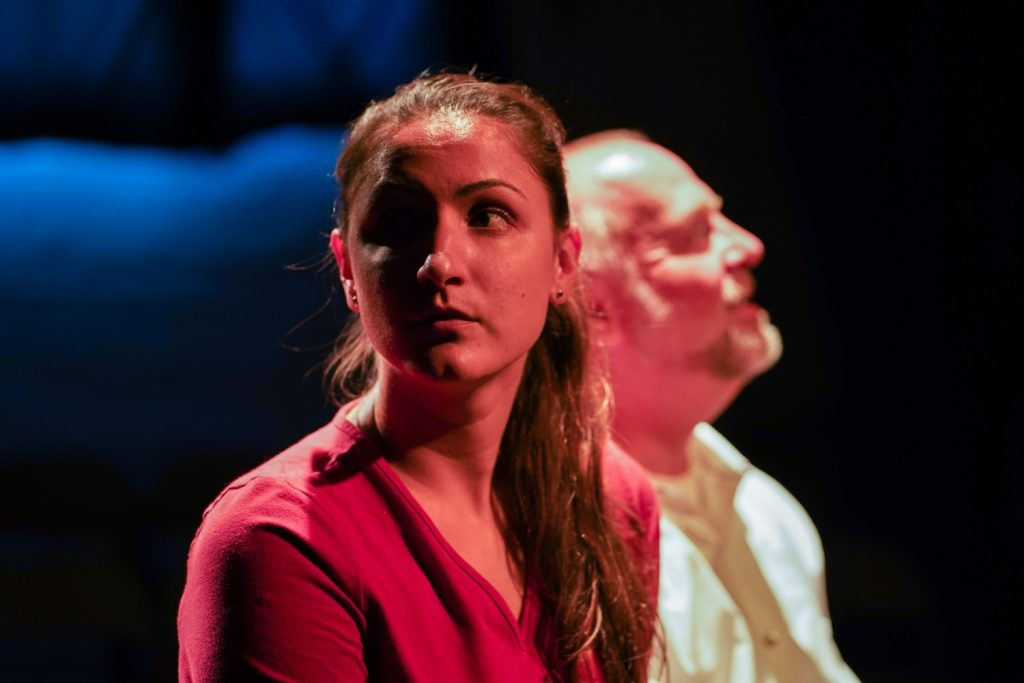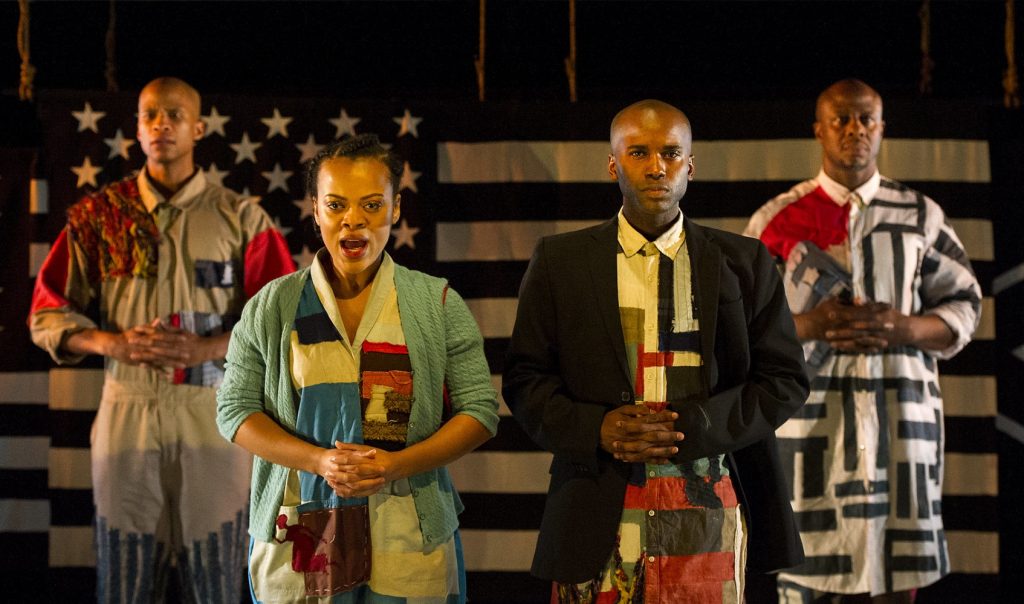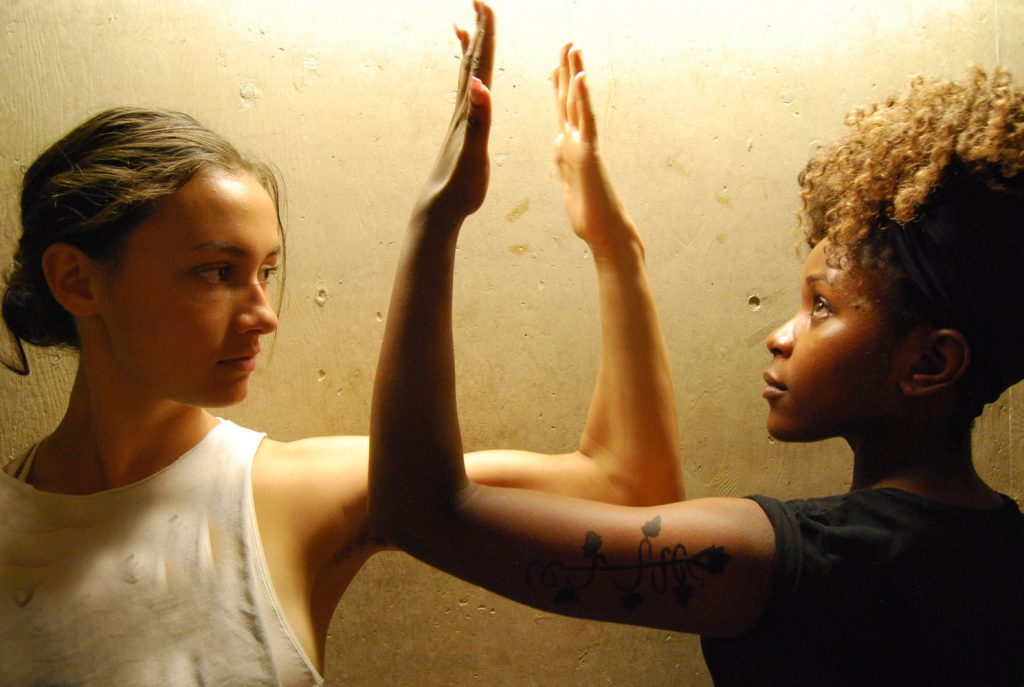Every year in this column I make an equity survey of area theaters – not Equity the actors’ union, but the representation of women and people of color. And every year the outlook, once deeply depressing, gets a little better. Of the 45 full productions I saw this year in the Valley and Berkshires (contrary to rumor, I don’t see everything), 30 were written by, directed by, and/or centrally focused on women and/or people of color.
In Western Mass., the gender side of the effort is sustained by the fact that a majority of the area’s theaters are led by women – I count ten in the Valley alone – which informs the perspective and content of their programming. At least four of them – Pauline Productions, Strident Theatre, the Academy of Music and the Berkshires’ WAM Theatre – have producing missions specifically focused on making opportunities for women (and non-binary-identifying artists) at every level of creation.
Looking at my theater calendar for the past 12 months, I can’t find a Valley company that didn’t produce at least one show with people of color and/or women center stage and in the key creative roles.
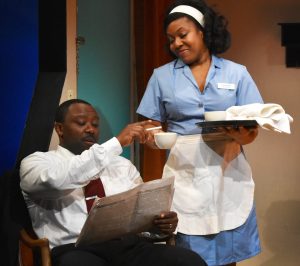 The year began at the Majestic Theater, with a “trifecta,” where all three of the playwright-director-focus criteria came together in a single production. The Mountaintop, Katori Hall’s fantasy of Martin Luther King Jr.’s last night on earth, starred Jamil A.C. Mangan and Lynnette R. Freeman and was directed by Gilbert McCauley. Another trifecta, at the Academy of Music, was Shut UP, Emily Dickinson, a witty deconstruction of the belle of Amherst, written and performed by Tanya O’Debra and directed by Sara Wolkowitz.
The year began at the Majestic Theater, with a “trifecta,” where all three of the playwright-director-focus criteria came together in a single production. The Mountaintop, Katori Hall’s fantasy of Martin Luther King Jr.’s last night on earth, starred Jamil A.C. Mangan and Lynnette R. Freeman and was directed by Gilbert McCauley. Another trifecta, at the Academy of Music, was Shut UP, Emily Dickinson, a witty deconstruction of the belle of Amherst, written and performed by Tanya O’Debra and directed by Sara Wolkowitz.
Two productions of the one-woman monologue On the Exhale, a sad and surprising take on the epidemic of gun violence, were presented in the Valley this year – first by Serious Play, with Elizabeth Solomon and directed by Sheryl Stoodley, then at Chester Theatre Company, with Tara Franklin under Colette Robert’s direction.
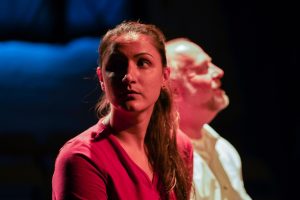 In the summer, Ghost Light Theater performed How I Learned to Drive, Paula Vogel’s memory play about sexual abuse, at Gateway City Arts, starring Carissa Dagenais and directed by Sue Dziura; Jeannine Haas’ Pauline Productions revived Laurel Turk’s all-woman Breastless at the Majestic; and three women-centered shows played in the Ko Festival’s five-week season on themes of place and displacement.
In the summer, Ghost Light Theater performed How I Learned to Drive, Paula Vogel’s memory play about sexual abuse, at Gateway City Arts, starring Carissa Dagenais and directed by Sue Dziura; Jeannine Haas’ Pauline Productions revived Laurel Turk’s all-woman Breastless at the Majestic; and three women-centered shows played in the Ko Festival’s five-week season on themes of place and displacement.
The season brought several more trifectas. In the Valley, Strident Theatre’s debut production was The Final Say, written by Meryl Cohn and directed by Susanna Apgar, about a woman playwright. Real Live Theatre staged Gracie Gardner’s Athena, directed by Ellen Morbyrne, in which Rachel Hall and Syl Simmons worked out their differences with swordplay. And Toby Bercovici’s The *Annotated* Taming took an astringent view of that Shakespearean shrew at Hampshire Shakespeare Company (where we also saw a female Henry V).
Two shows about real-life women, remembered largely through their connection to famous men, brought them out of the shadows to stand in their own spotlight. Artemisia’s Intent, at the Shea Theater in Turners Falls, featured Mariah Freda as Artemisia Gentileschi, the daughter of Renaissance painter Orazio Gentileschi but an accomplished artist in her own right; and Anne Undeland’s Lady Randy, at WAM Theatre, focused on Jennie Jerome, the brilliant socialite “dollar princess” and mother of Winston Churchill.
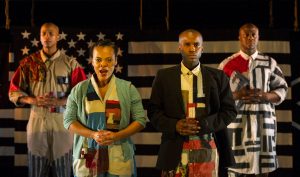 Elsewhere in the Berkshires, Barrington Stage Company premiered two dystopian dramas about people of color – America v.2.1, a sassy, scary parody of white-supremacist fever dreams, written and directed by black women, and American Underground, in which Islamophobia is taken to its logical extreme. Williamstown Theatre Festival produced Lorraine Hansberry’s classic A Raisin in the Sun, the history-making portrait of a black family, and premiered Jonathan Payne’s A Human Being, of a Sort, the history-based story of a Congolese pygmy exhibited in the Bronx Zoo. And at Shakespeare & Company, Suzan-Lori Parks’ Topdog/Underdog, directed by Regge Life, starred Deaon Griffin-Pressley and Bryce Michael Wood as brothers battling racial stereotypes and each other.
Elsewhere in the Berkshires, Barrington Stage Company premiered two dystopian dramas about people of color – America v.2.1, a sassy, scary parody of white-supremacist fever dreams, written and directed by black women, and American Underground, in which Islamophobia is taken to its logical extreme. Williamstown Theatre Festival produced Lorraine Hansberry’s classic A Raisin in the Sun, the history-making portrait of a black family, and premiered Jonathan Payne’s A Human Being, of a Sort, the history-based story of a Congolese pygmy exhibited in the Bronx Zoo. And at Shakespeare & Company, Suzan-Lori Parks’ Topdog/Underdog, directed by Regge Life, starred Deaon Griffin-Pressley and Bryce Michael Wood as brothers battling racial stereotypes and each other.
The Five Colleges gave us several qualifying productions, most of them trifectas. At Mount Holyoke there was Sarah Treem’s When We Were Young and Unafraid, set in a shelter for abused women, directed by Abby Carroll. Smith staged Jen Silverman’s whimsical jaunt into Brontë country, The Moors, directed by Isabelle Brown. Hampshire’s Persons of Color Artist Collective presented a weekend of original works, curated by Hannah Jones.
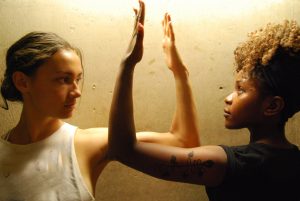 UMass mounted Lynn Nottage’s Sweat, involving racial and economic tensions in a dying industrial town, helmed by Gilbert McCauley; and The Bacchae, Wole Soyinka’s African-seasoned retelling of Euripides’ tragedy, directed by Judyie al-Balali. At Amherst, the exotic princess of Euripides’ Medea was re-imagined as a Hollywood sex symbol – and an immigrant – with Maki Ybarra-Young in the title role.
UMass mounted Lynn Nottage’s Sweat, involving racial and economic tensions in a dying industrial town, helmed by Gilbert McCauley; and The Bacchae, Wole Soyinka’s African-seasoned retelling of Euripides’ tragedy, directed by Judyie al-Balali. At Amherst, the exotic princess of Euripides’ Medea was re-imagined as a Hollywood sex symbol – and an immigrant – with Maki Ybarra-Young in the title role.
The local stats reflect a national trend. Twelve of the top 20 playwrights in American Theatre magazine’s list of the most-produced plays and playwrights in regional theaters this season are women, four of them women of color. Number one this year – again – is Lauren Gunderson, who’s been produced around here for at least the past five years, most recently Silverthorne Theater Company’s boisterous production of her all-woman historical dramedy The Revolutionists. Near the top of that list is Dominique Morisseau, also an annual fixture in the region, represented last month by Pipeline, a searing drama of black lives on the edge, at WAM Theatre.
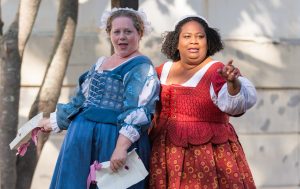 Concurrent with the growing awareness of underrepresentation has been the movement toward gender- and color-blind casting, along with the overdue recognition that many roles are not necessarily race- or gender-specific. In this region, Shakespeare & Company has been the trailblazer – this past summer, for instance, one of the Merry Wives of Windsor was black and most of the written-as-male supporting cast were female.
Concurrent with the growing awareness of underrepresentation has been the movement toward gender- and color-blind casting, along with the overdue recognition that many roles are not necessarily race- or gender-specific. In this region, Shakespeare & Company has been the trailblazer – this past summer, for instance, one of the Merry Wives of Windsor was black and most of the written-as-male supporting cast were female.
This trend not only provides more job opportunities for previously excluded artists, it has helped open the way to addressing the core issue of whose plays are produced, what they are about, who shapes their production, and who is center stage in the leading roles – not to mention the design and technical jobs farther down the credits list, another area that’s still far from parity.
Overall, looking at this year’s repertoire through the prism of my key categories, I’m encouraged, especially compared with previous years. For instance, in 2014, only four of the 35 full productions at the area’s professional theaters were written by women, and eight had women directors. And in the 2016 summer season, out of 200-plus performers in the 40 plays and musicals I saw, just 21 people of color had speaking roles.
It’s way too early to declare victory in the equity stakes, but the momentum is tangible. The stage is enriched, and that world of make-believe is looking more and more like real life.
Photo credits:
Shakespeare & Company, The Merry Wives of Windsor, Nile Scott Studios
Majestic Theater, The Mountaintop, Kait Rankins
Ghost Light Theater, How I Learned to Drive, Paul Bloomfield
Barrington Stage Comapny, America v.2.1, Daniel Rader
UMass, The Bacchae, Megan Lewis
The Stagestruck archive is at valleyadvocate.com/author/chris-rohmann
If you’d like to be notified of future posts, email Stagestruck@crocker.com

